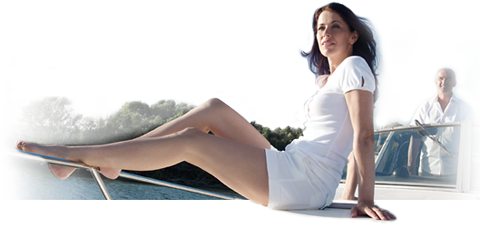About 30% of all women and men suffer from larger varicose veins
Here you find more information about the different types of varicose veins, their symptoms, and the complications

Symptoms of varicose veins
Recognise varicose veins early enough
Leaving aside the cosmetic appearance of the tortuous veins visibly protruding under the skin, varicose veins do not initially cause any symptoms in many cases. Nevertheless, patients may find that their physical wellbeing is diminished by the unsightly veins and the burden of suffering in everyday life can be very high, even in the absence of any “real” symptoms.
There are no typical symptoms that can be said to be diagnostic of varicose veins. Most of the symptoms can also be due to other diseases or can even affect otherwise healthy people. An overall picture and a thorough examination are therefore essential to allow the doctor to determine whether or not varicose veins are responsible for the symptoms.
The most common symptoms of varicose veins include a feeling of tension and swelling in the legs, tired and heavy legs, irregular pain, burning, itching, or tingling sensations. The symptoms tend to be worse in the evenings, particularly after sitting or standing for long periods, and in warm weather. Unpleasant sensations of heat or cold, night cramps in the calves, and restless legs also occur. The pooling of blood in the legs leads to an accumulation of fluid in the tissues, especially around the ankles, causing them to swell. This so-called oedema, which is also worse in the evenings and during warm weather, can be counted as one of the complications of varicose veins.
Symptoms of varicose veins
- Unsightly appearance
- Feeling of tension and swelling in the legs
- Tired and heavy legs
- Pain or burning in the legs
- Itching or tingling sensations
- Sensation of warmth or cold in the legs
- Night cramps in the calves
- Restless legs
- Oedema (collection of fluid)
The severity of the symptoms does not necessarily correlate with the size of the varicose veins. Sometimes even spider veins cause problems, while, in contrast, patients with large varicose veins may be virtually symptom-free. But patients with marked varicose veins should be treated promptly, even if their symptoms are only mild. Complications and long-term effects are clearly dependant on time and the more the return blood flow is disrupted, the higher the risk of secondary effects.
